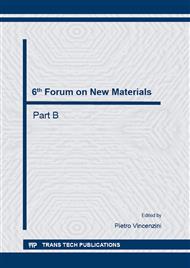p.38
p.43
p.55
p.69
p.75
p.85
p.93
p.97
p.103
Selective Decontamination and Stable Solidification of Cs-Insoluble Ferrocyanide by Zeolites
Abstract:
Large amounts of high-activity-level water (HALW) were generated from the nuclear accident in Fukushima NPP-1 caused by the Great East Japan Earthquake. At present, the cold shutdown is completed by cooling system, while large amounts of HALW (> 300,000m3) and secondary solid wastes such as insoluble ferrocyanide sludge adsorbing 137Cs are still stored. For the stable solidification of Cs-insoluble ferrocyanides, the press/sintering method was developed by mixing zeolites. In this method, the excellent abilities of zeolites such as Cs adsorbability, gas trapping and self-sintering abilities were used for the stable solidification; zeolites are effective for the stable solidification of Cs-insoluble ferrocyanides as a solidification matrix. Cs adsorbed insoluble ferrocyanides tend to release all Cs at higher temperature above 1,000°C, while the immobilization ratio of Cs about 100% was maintained by sintering the mixtures of Cs-insoluble ferrocyanide and zeolite. The advantages of sintered products are large volume reduction of 30-50%, no effect of NaCl on Cs immobilization and low leachability of Cs, indicating the excellent solidification properties of sintered products of insoluble ferrocyanide and zeolite. This method can be applied to the stable solidification of the secondary solid wastes such as insoluble ferrocyanide sludge in Fukushima NPP-1.
Info:
Periodical:
Pages:
75-84
Citation:
Online since:
October 2014
Authors:
Price:
Сopyright:
© 2014 Trans Tech Publications Ltd. All Rights Reserved
Share:
Citation:


